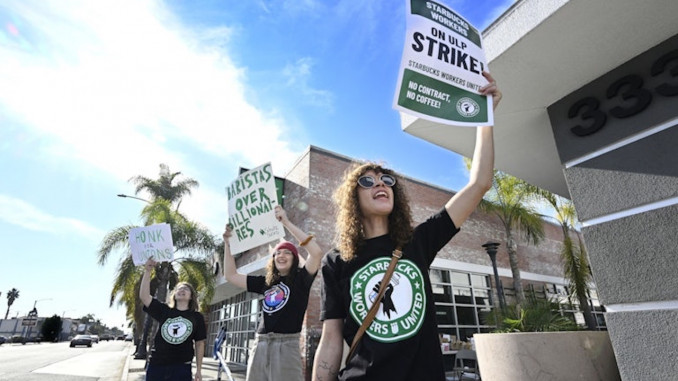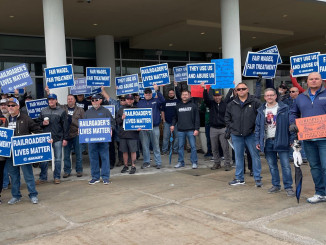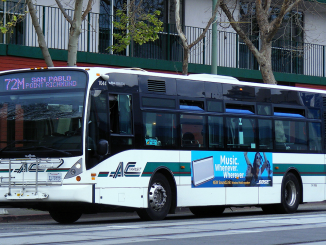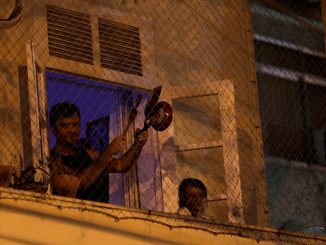
This is a repost of an article written by Adam Shils for the International Socialism Project posted on June 19, 2023.
The labor movement is back in the news. The Screen Writers strike has gained wide publicity as A-list actors support the picket lines. Starbucks workers appear to unionize a new store every day. High profile negotiations are taking place at UPS and at the Big Three automobile companies. What’s really going on here? The purpose of this article is to attempt to provide an overview of the current situation in the US trade union movement. To do this, we will look at some recent developments, then examine the biggest union action taking place at the moment —the Screen Writers strike—and finally conclude by discussing three important upcoming events: the Teamster negotiations at UPS, the Big Three auto negotiations, and the Supreme Court’s Glacier Northwest case.
1) Recent developments
The industrial front
It’s important to place the labor movement in a general social context. Unemployment has obviously markedly declined. The current rate is 3.4 percent. However, the newly created jobs are not stable, well-paying jobs. A good portion of the working class is still living paycheck to paycheck. For example, 37 percent of people reported in a recent survey that they could not, even using a credit card, cover an emergency expense over $400.
Inflation plays an important role in this situation. It now stands at 4.93 percent. There has been a lot of talk of improved contract settlements leading to higher wages. As always, the devil is in the details. The average rate of wage increase in 2022 contracts was 5.7 percent. This is only 0.77 percent above the rate of inflation. So unionized workers are not seeing a significant increase in their real income.
Overall union density has declined to 10.1 percent. (This is a rate of 6 percent in the private sector and 33.1 percent in the public sector.) Last year, 120,600 workers were involved in major (over 1,000 workers) strikes last. Only 2,200 of these were manufacturing workers. That’s under 2 percent. The situation in 2023 is no different. There have only been two industrial strikes involving more than 1,000 workers this year. There were brief Teamster strikes at Sysco, the food products distributor. There was also the end of the bitter 180-day long UAW strike at CNH Industrial, an agricultural equipment maker. Overall, perhaps the biggest event for blue collar labor was the clear defeat of the Mine Workers at Warrior Met in Alabama where unionized workers made an unconditional return to work after a long strike. One can hardly speak of a rising workers movement.
At this point, an optimistic reader might reply, “You only talk about strikes over 1,000 workers, the ones recorded by the Bureau of Labor Statistics. What about smaller ones?” There are certainly a number of smaller strikes taking place today. Examples are strikes at Clarios auto parts and strikes by Teamsters at Coca-Cola distributors in Pennsylvania and West Virginia. However, there are simply not enough of these strikes in private sector factories to make a trend of worker militancy and success.
This obviously does not mean that the industrial situation is uniformly hopeless. There have been important organizing victories. The workers at school bus maker Blue Bird in Georgia joined the United Steelworkers by a vote of 697 to 435. The Teamsters won a major victory when DHL Express workers at the Cincinnati/Northern Kentucky International Airport (CVG) voted 505-287 to join the union. CVG is a crucial hub for logistics and supplies for the whole country. Furthermore, there is an organizing drive by Amazon workers taking place at CVG also.
Service and public sectors
The situation is very different in the service and public sectors. Here there have been a significant number of strikes and other forms of union activity. We have seen:
- The Oakland public school teachers strike.
- The Los Angeles school support staff strike.
- The Rutgers faculty strike.
- The University of Illinois faculty strike.
- Three strikes in the public university system in Illinois.
- Strikes by Cannabis dispensary workers, “budtenders”, such as at Rise in Illinois.
- The strikes of graduate students at the University of Michigan and Temple University.
- The strike by workers at Howard Brown, a health care clinic for the lesbian and gay community in Chicago.
- The extraordinary success of the Starbucks union organizing campaign, with over 300 stores unionized.
- Organizing victories at Collectivo and Intelligentsia coffee house and REI sporting goods.
- There has been a real wave of union organizing by AFSCME among museum workers. In Chicago alone, they have won elections at the Notebaert Nature Museum, the Newberry Library, the Art Institute, staff and non-tenure track faculty at the School of the Art Institute, and the Field Museum.
- The strike by 1,700 home health care workers organized by the SEIU in Connecticut.
A number of comments should be made on these actions. First, the Connecticut home health care workers and the LA school support staff workers represent a different section of the working class from the young, often college educated baristas and museum workers. The health care and school support workers are more likely to be Black or Latino and older.
Secondly, all is not smooth sailing in public sector unionism. To take one example, labor activists are still making a balance sheet of the recent Oakland public school teachers strike. From afar, it seems as if a number of tactical questions need to be asked. How wise is a strike with only a 75 percent authorization vote, when a good number of schools weren’t able to find one person willing to serve on the bargaining team, and at the end of the school year? May strikes are extremely uncommon in teacher unionism. How much did the union actually win in the strike? It will be important to follow how this discussion unfolds.
Thirdly, and most importantly, the newly organized trade unions are facing stiff management opposition. Once a union has won the NLRB representation election, negotiating the first contract becomes the number one priority. Management seeks to string out this process for as long as possible and places as many hurdles in the way as they can. From 2005 until 2022, it took an average of 465 days to reach a first contract. If we just use the statistics for 2020 to 2022, the average rises to over 500 days. Starbucks Workers United have won over 300 union representation elections. But, they have yet to reach one single negotiated contract with the company!
Starbucks’ repressive action against union activists is making them the modern Pinkertons [the often-violent union-busting firm of the late 19th and early 20th centuries]. They have fired over 230 union activists since the organizing drive began. Several days before a recent vote, the main union leader at a Starbucks predicted to me that they would be fired following the union election. Within just days of the election, they were gone. Their prediction had come true.
Starbucks has also adopted the policy of providing better wages and benefits at non-union stores. Their aim is to combine the “carrot” of improved conditions at non-union stores with the “stick” of firing activists.
2) Today: the Screen Writers Strike
The biggest strike taking place today is the strike by the 11,500 members of the Writers Guild of America (WGA) which began on May 2. The WGA represents movie, TV, and online writers. They are facing off against the Alliance of Motion Picture and Television Producers (AMPTP), the movie industry trade association. Among the main issues are:
- Bringing pay for working on streaming services into line with broadcast rates. Obviously, the extraordinary rise of different streaming platforms has changed the face of the industry. Ensuring proper compensation in this burgeoning sector is a top union priority.
- Residuals or royalties. The myriad different forms of viewing that are currently available has transformed how royalty payments are calculated. The union is fighting for an equitable procedure for this to be done.
- Writer’s Rooms. This refers to the size of the team of writers working on a particular show. It’s complicated by the different number of episodes in streaming and broadcast seasons. In general, it’s no surprise that the AMPTP wishes to get the job done with the minimum number of workers being paid for the shortest possible amount of time. This may well prove to be one of the most contentious issues in the strike.
- Management’s proposals on the use of artificial intelligence for script writing. (I’m not kidding!).
- Health and pension issues.
It’s hard to tell from afar how the strike is going. The picket lines appear robust and spirited. Support from other parts of the labor movement has been good. The general consensus among journalists appears to be that the strike may well drag on for some time yet.
3) Coming down the road
There are three important events coming up over the next few months. First, and probably foremost, are the contract talks between UPS and the Teamsters. This will cover 350,000 workers at an employer which transports about 6 percent of the nation’s GDP each day. The 1997 UPS strike was one of the most important events in recent labor history. The new IBT leadership of Sean O’Brien and Fred Zuckerman have staked their entire reputation on getting a successful contract. A great deal is riding for them here.
The union has already started a Contract Unity Pledge campaign. The Teamsters have held parking lot rallies, contract action team trainings, and many other activities to prepare for a possible strike when the contract expires on July 31. The union leadership has made an important change of strategy by negotiating the “Supplemental” or local contracts first before the national contract is worked on.
Management has also been gearing up. CEO Carol Tome has been calling for a “cost neutral” contract. Managers have been making arrangements for dealing with a work stoppage. The central issues at the table are:
- 4 workers. This group of workers combine inside the warehouse packing with outside driving jobs. They are paid less than regular drivers. Their title comes from the clause, 22.4, in the contract that covers them.
- Ending excessive overtime.
- Forbidding the use of Personal Vehicle Drivers. These are temporary workers who use their own cars to deliver UPS packages. This is sort of an “Uberization” of UPS work.
- Increased driver surveillance by the company.
- Increased pay for part time workers.
- Protections against extreme heat.
The second big round of negotiations scheduled to take place are between the United Auto Workers and the Big Three automakers. The current contract expires on September 14 and bargaining will probably start in July. Generally, one automaker is selected to be the target for bargaining and the other two then follow the pattern set by the first contract. This year’s target has not been selected yet.
Similarly to Sean O’Brien in the Teamsters, the UAW has a new assertive president. Shawn Fain was elected as an opposition candidate to the old leadership. He was supported by the Unite All Workers for Democracy opposition caucus.
Two issues seem certain to come to the fore. The first is Electronic Vehicles (EV). EV is rapidly becoming a large issue in the automobile industry. EVs require less workers than the manufacture of regular internal combustion engine vehicles. Massive retooling and retraining will be needed. The union will have to see that workers interests are protected throughout this process.
The other big issue is wage tiers. Most car factories have multiple wage tiers where workers get paid vastly different wages for doing the same work. Tiers are based on hiring date, employer in multi-employer workplaces, number of hours worked, and a score of other factors. One labor journalist tallied over twenty tiers in one auto plant. The new UAW leadership will be under great pressure to do something about this abhorrent situation and bring in new, fairer wage structures.
The final issue coming up this summer is not a set of negotiations, but a Supreme Court case. The case is Glacier Northwest. The Court has already heard the case and will issue a decision before it adjourns in early July. Glacier Northwest is a concrete mixing company in Washington state.
The company sued Teamsters Local 174 in state court, arguing that it should receive damages from the union caused when concrete hardened in their mixers when the union members went out on strike in 2017. In fact, the union members left the mixers running to prevent hardening when they left the workplace at the beginning of the strike.
The stakes here are clearly very high. If management is able to sue the union for losses incurred during a strike, this would severely weaken labor. The whole rationale and purpose of a strike is to adversely impact the company’s profits and operations. If employers can recoup, from the union itself, losses caused by a strike, then striking would become virtually impossible. The present case does not go that far, but a pro-employer ruling would open the door to future assaults.
Conclusion
To conclude, when one looks at the youthful Starbucks baristas, museum workers, and striking educators one sees a reservoir of creativity, dynamism, and enthusiasm. When one looks at the industrial unions, one sees a bastion of practical experience, technical know-how, and resources. The new young trade unionists desperately need the skills, knowledge, and toughness of the older generations. The old established unions need the drive, vigor, and esprit de corps of their new comrades. When these two trends merge, the labor movement will be back on the road—with a vengeance.




